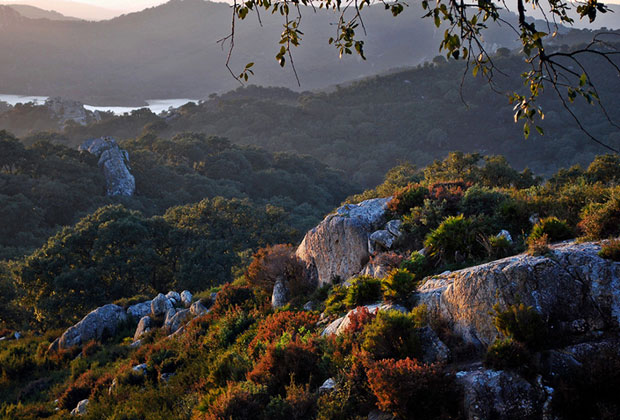Los Alcornocales Natural Park occupies a territory spanning seventeen municipalities with a total population of about 380,000. «Los Alcornocales» means «the cork oak groves».
Nearly all of the uninhabited land in the park is covered by Mediterranean native forest. While some of the land has been cleared for cattle ranches, much of the human activity in the park is devoted to exploitation of the forest’s resources: hunting wild game, collecting wild mushrooms, and foraging for good specimens of tree heath. The tree heath (Erica arborea, called «brezos» in Spanish) is a small evergreen shrub, rarely more than two or three meters high; it is the source of the reddish briar-root wood used in making tobacco pipes, and its wood is excellent raw material for making charcoal.
Above all, however, the park’s forests are exploited for the production of cork. The cork oak (Quercus suber) is a tree with a spongy layer of material lying between the outer surface of its bark and the underlying living layer called the phloem (which, in turn, encloses the non-living woody stem.) Cork is generated by a specialized layer of tissue called cork cambium. Properly done, harvesting cork from a given tree can be undertaken every ten to twelve years without damaging the tree; the cork cambium simply regenerates it. Cork has many commercial uses, including wine-bottle stoppers, bulletin boards, coasters, insulation, sealing material for jar lids, flooring, gaskets for engines, fishing bobbers, handles for fishing rods and tennis rackets, etc.
